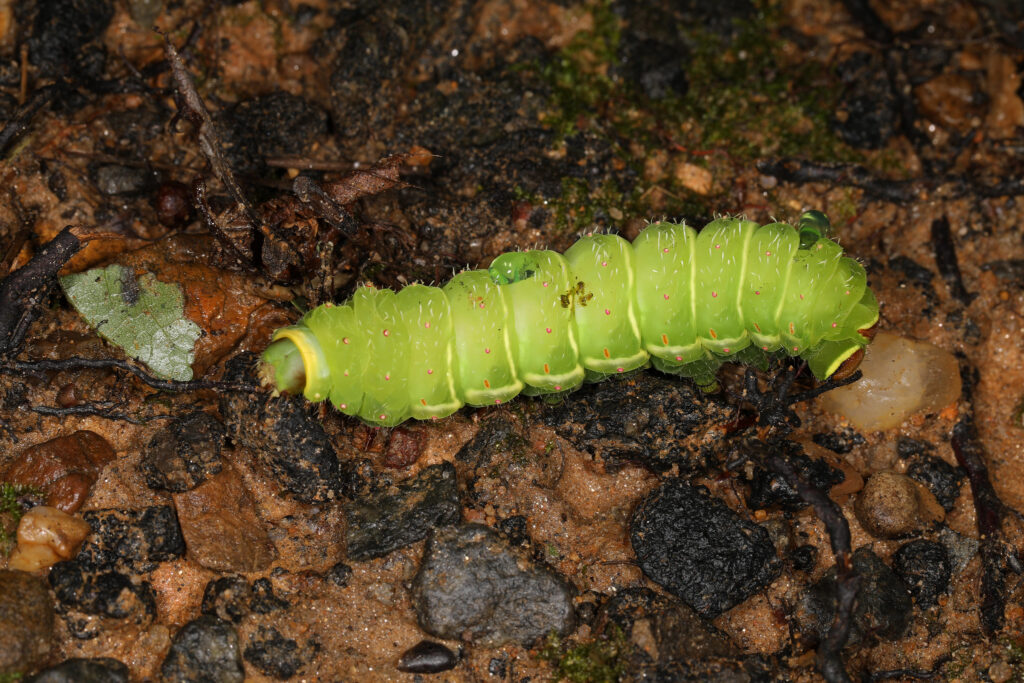
Most of us are familiar with air pollution, water pollution, soil pollution, and even noise pollution. But it turns out that light can be a pollutant as well, and it’s a consequence of industrial civilization. In fact, nighttime light pollution now covers approximately 23% of the globe and over 80% of inhabited regions.
Light pollution affects more than just our view of the stars. For example, light pollution can alter our circadian rhythm, disrupting our sleep cycle. In nature, light pollution can kill baby turtles by causing them to head inland instead of into the ocean, can cause birds to migrate during the wrong season, and can deter nighttime pollinators like bats. And those are just a few of the examples.
According to new research from scientists at Cornell University, moderate levels of artificial light at night – like a porch light – attract caterpillar predators and reduce the chance that caterpillars grow up to become moths.
In the study, which was recently published in the journal Proceedings of the Royal Society B: Biological Sciences, the researchers placed 552 lifelike caterpillar replicas made of soft clay in a forest to measure predation rates compared to a control group. They found that predation rates on clay caterpillars and the abundance of arthropod predators were significantly higher on the artificial light at night treatment plots. In fact, of the 552 clay caterpillars deployed and glued to leaves to look authentic, 521 models were recovered and 249 of them- or 47.8% – showed predatory marks from arthropods during the summer-long nighttime study.
In addition to light pollution, caterpillars also face major threats from habitat loss, pollution, invasive species, and climate change.
**********
Web Links
Artificial light at night aids caterpillar predators
Photo, posted July 23, 2020, courtesy of Judy Gallagher via Flickr.
Earth Wise is a production of WAMC Northeast Public Radio
Leave a Reply